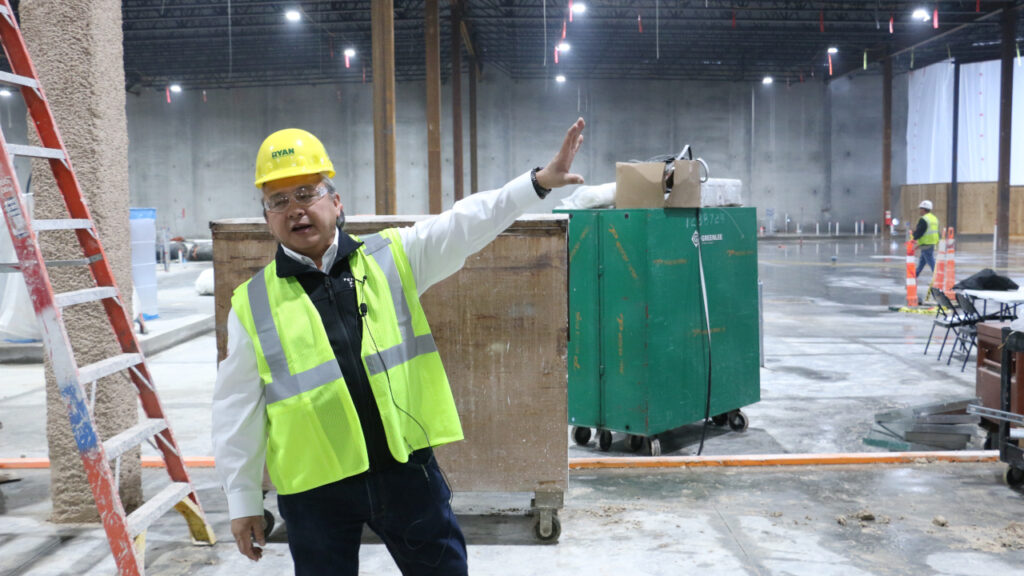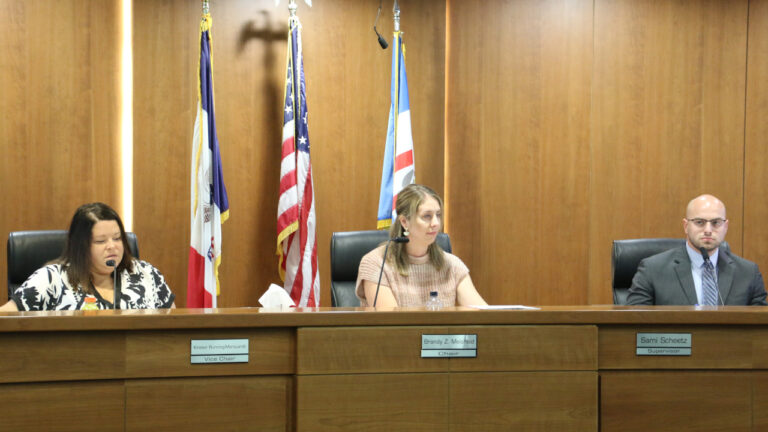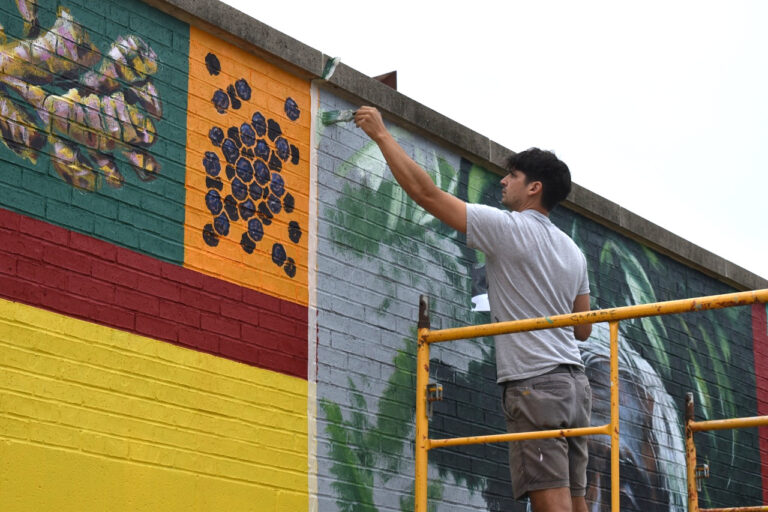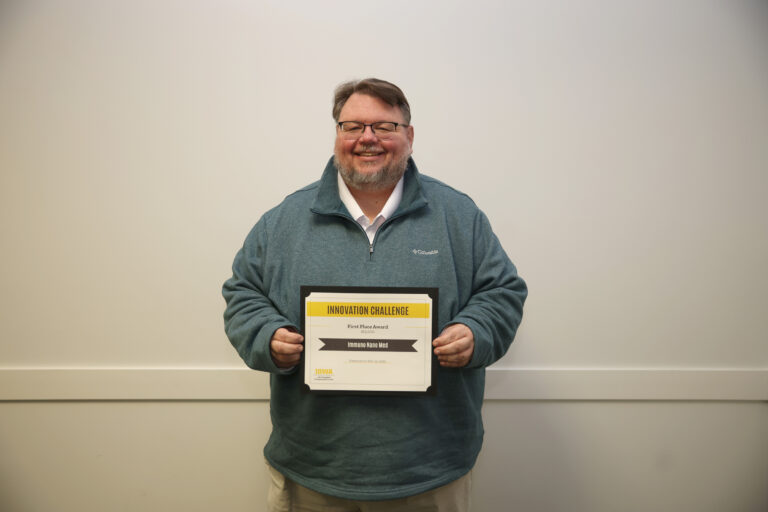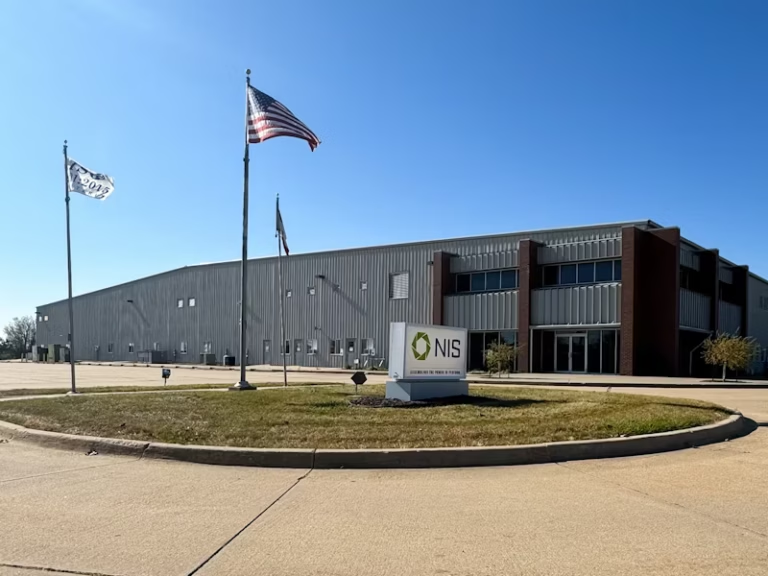On course. On time. On target. That was the message Thursday afternoon, Nov. 20, as the developers of the Cedar Crossing casino in northwest Cedar Rapids provided a construction update for members of the media.
Kim Pang, vice president of development at Peninsula Pacific Entertainment (P2E), the casino’s developer, expressed cautious optimism that the $275 million casino, which received a long-sought gaming license from the Iowa Racing and Gaming Commission in February, remains on track to open Dec. 31, 2026 – in time for New Year’s Eve celebrations.
“Murphy’s law would have it,” Mr. Pang said. “I don’t want to jinx it, but inadvertently, something will be delayed. I don’t want to say we’re ahead or we’re behind. We’re focused.”
Gallery
The outer shell of the casino was essentially completed earlier this month, and Stefan Kuba, P2E’s chief development officer, said the facility is now “dried in,” which will allow crews to continue interior work throughout the winter.
According to Mr. Pang, about 130 construction trades workers are currently working on the casino, located on the former Cooper’s Mill hotel and restaurant site along F Avenue NW, just across the Cedar River from Quaker Oats. That number of workers will eventually swell to more than 200, he said as interior work continues on the facility – including event center with a 1,500-person capacity, a 5,000-square-foot STEM center that may accommodate touring exhibits, a 40,000-square-foot gaming floor with 700 slot machines and 22 table games, and a host of dining options.
Mr. Pang also noted that nearly all the workers and construction firms for the project are based in Iowa.
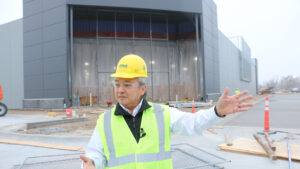
“We’ve used primarily Iowa subcontractors,” Mr. Pang said. “We’re proud to say we have 98.5% Iowa subcontractors. Our goal always, as a company, is to buy Iowa whenever we can.”
That goal has been facilitated by positive relationships with Iowa firms, including Ryan Companies, the facility’s general contractor.
“We’ve had some great support and great relationships with the local trades,” Mr. Kuba said. “They’ve been fantastic to work with. The city has been phenomenal, working with us through all the permitting processes and through all the requisite bureaucratic things you need to go with during your construction. And we’ve been very fortunate to choose a great partner in Ryan Companies. As a construction team, they’re really executing our vision and doing a great job.”
Mr. Pang said he expects hiring for the new casino “in the latter part of the summer” of 2026, in hourly workers by “about four to five weeks” before opening. He also said P2E expects to work closely with Kirkwood Community College on workforce recruitment, development and training as the casino’s opening date nears.
There have been some unique challenges at the Cedar Crossing site. Mr. Pang acknowledged that some infrastructure, including sewer lines and water lines, have had to be relocated to accommodate the casino’s construction.
Also, building the casino in the city’s 100-year flood plain – in an area that was devastated in the city’s 2008 flood – necessitates raising the casino six feet above the land surrounding it. That has required contractors to import 104,000 tons of limestone screenings – 6,900 dump truck loads – to elevate the building out of the floodplain.
And the project includes a stormwater detention component designed to hold more than 300,000 gallons of water on-site, helping to address runoff management concerns.
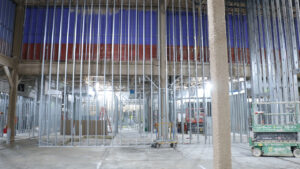
Challenges aside, Mr. Pang said he feels the city’s reception of the Cedar Crossing project has been largely positive – a sentiment, he said, that was reinforced when local elected officials had their own site tour Wednesday, Nov. 19.
“We talked to Councilman Dale Todd yesterday, and he was very, very positive,” he said. “I think at the end of the day, we’ve taken all the steps. We’ve shown the neighborhood what we want to do, and we’ve had good approval.”
He described the casino’s financial consequence – up to 1.2 million projected visitors annually, a projected $2.25 billion in total economic impact to the state of Iowa and the Cedar Rapids area over its construction and first ten years of operation – as a “domino effect.”
“Talking to the CVB (convention and visitors bureau), if a person comes for two days, hopefully they extend to three days,” he said. “What does that mean for businesses? That means big growth. Local businesses, New Bohemia, Czech Village, will get more tourists, more foot traffic within their area, hotel rooms that would hopefully fill up. You know, that’s the reason why AC Marriott is going to be building (at Kingston Yard). They don’t build because they want to. They build because they see the potential for growth. This becomes one of the anchors that helps Cedar Rapids redevelopment.”
The culmination of a 12-year effort to bring a casino to Cedar Rapids – including two previous proposals rejected by the IRGC before February’s approval – is gratifying on several levels, Mr. Pang added, including the 8% of adjusted Cedar Crossing gaming revenue that will be distributed to area nonprofits through the Linn County Gaming Association.
“When you think about all the efforts, when we had two referendums that said 61% and 55% (wanted) a casino, and we finally got it … some people told me, before I came to Cedar Rapids, we didn’t think it’s going to happen,” Mr. Pang said. “Watch this grow. This is something that we’ve been waiting for for a long time, and we continue to hopefully become part of Cedar Rapids and help the local community.”



